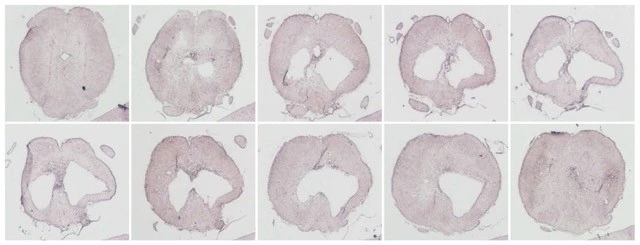
Research focus
The aim of our research is to investigate the potential of regenerative cell therapy, and how cell therapy can be applied for spinal cord injury. We have chosen mainly to focus on chronic spinal cord injury and a condition called post-traumatic syringomyelia (PTS). Persons with spinal cord injury may develop PTS years after injury. PTS is characterized by expanding cysts in the injured spinal cord that cause further destruction of the nervous tissue, and further loss of motor and sensory functions, increased spasticity and chronic pain.
Our hypothesis is that better treatment can be achieved by combining surgery with transplantation of neural stem cells. Our primary goal is to develop a treatment by which stem cells injected in the area of the cysts - in conjunction with the surgical treatment - induce a permanent collapse of the cysts that prevents further cyst expansion. The secondary goal is to replace the nerve cells that died after the spinal cord injury with differentiated cells derived from transplanted stem cells.
We have developed a reliable rat model of PTS that shares the important features with the clinical situation, and used this experimental model to analyze the mechanisms of effects of cell therapy as well as the processes involved in the cyst expansion. We have recently published results showing the efficiency of human neural stem cells transplanted to rat PTS cysts, and the different therapeutic effects that contribute to the regenerative effect of transplanted neural stem cells.
With our focus on cell therapy for regenerative treatments in the central nervous system, we are also investigating the normal development of human stem and progenitor cells. We analyze the normal development of the human spinal cord using a multi-omics strategy, as well as cultured human stem and progenitor cells. By integrating these results we can determine what molecular mechanisms that control the fate specification and differentiation of human spinal stem cells. The project is a part of the Human Developmental Cell Atlas consortium and the Human Cell Atlas initiative.
